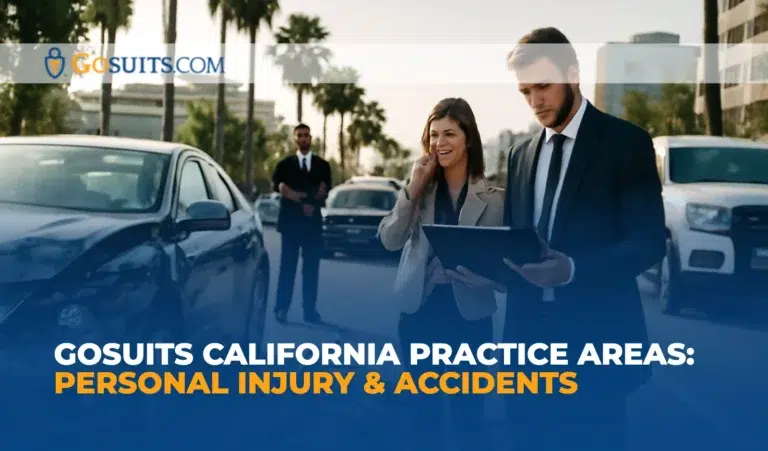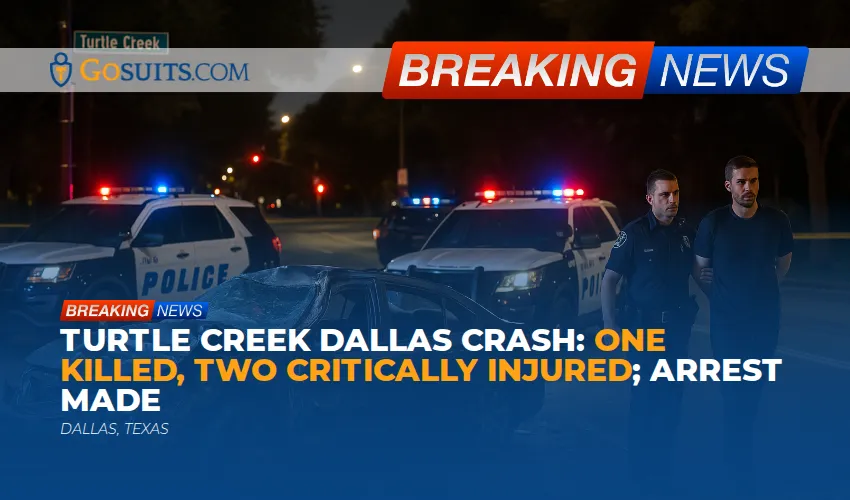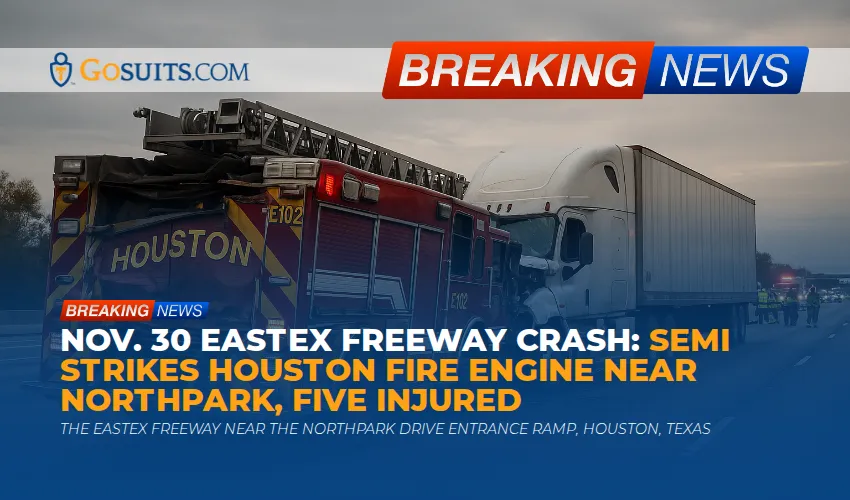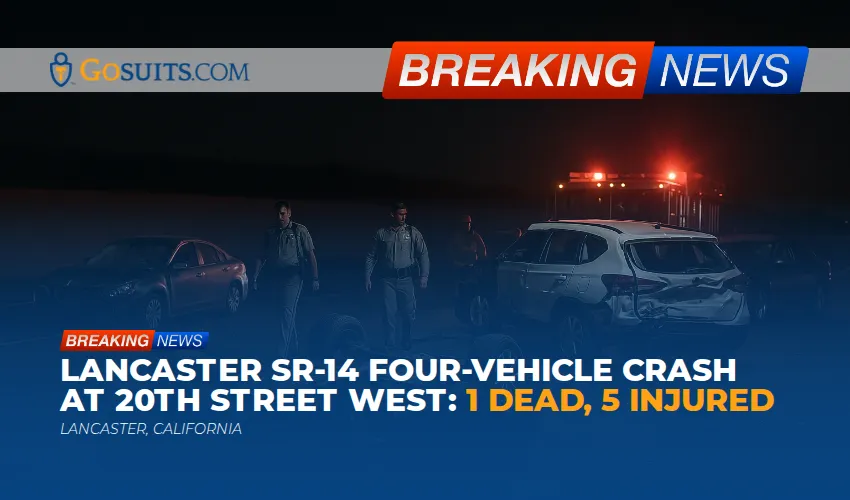- What should you know about California personal injury and accident law?
- What are the basic elements of negligence in California?
- How does California’s pure comparative fault rule affect your claim?
- What deadlines apply to California personal injury and wrongful death cases?
- What types of accident and injury cases are common in California?
- What should you do after a car accident in California?
- How do truck accident claims work under California and federal rules?
- What unique issues arise in motorcycle, bicycle, and pedestrian crashes?
- How do Uber and Lyft (rideshare) insurance claims work in California?
- How does California premises liability work for falls and property-related injuries?
- What is the difference between wrongful death and survival actions in California?
- How are brain and spinal cord injury claims documented and valued?
- How do insurance claims and lawsuits proceed in California civil courts?
- How are damages calculated in California injury cases?
- When are punitive damages available in California?
- What evidence should you gather and preserve after an accident?
- How are minors’ claims handled in California injury cases?
- What defenses do defendants and insurers commonly raise in California?
- Why is it important to work with a California personal injury lawyer?
- How does GoSuits support California personal injury clients?
- Which reliable resources and authorities does this guide rely on?
What should you know about California personal injury and accident law?
If you were hurt in California, you are likely navigating medical treatment, time away from work, insurance calls, and questions about your rights. California personal injury law is a civil system that allows you to seek compensation when another person or business acts negligently and causes harm. We focus here on civil cases involving car crashes, truck collisions, rideshare incidents, pedestrian and bicycle injuries, premises incidents, and wrongful death. This guide is tailored for California residents in Los Angeles, San Diego, San Jose, San Francisco, Sacramento, Orange County, Riverside, San Bernardino, Fresno, Oakland, Long Beach, and Bakersfield, though the general framework applies statewide.
Accident injuries remain a serious public safety concern. Nationally, the National Highway Traffic Safety Administration reported an estimated 42,514 traffic fatalities in 2022, underscoring the scope of harm on U.S. roadways and the need for careful claims handling and litigation where appropriate (NHTSA). California’s Office of Traffic Safety publishes annual statewide collision data to help highlight risks and trends for drivers, pedestrians, cyclists, and other road users (California OTS).
Below, we answer frequently asked questions about California personal injury law, insurance, time limits, damages, and the court process. We also discuss how a California accident attorney can help you make informed decisions, whether you are a plaintiff or a defendant.
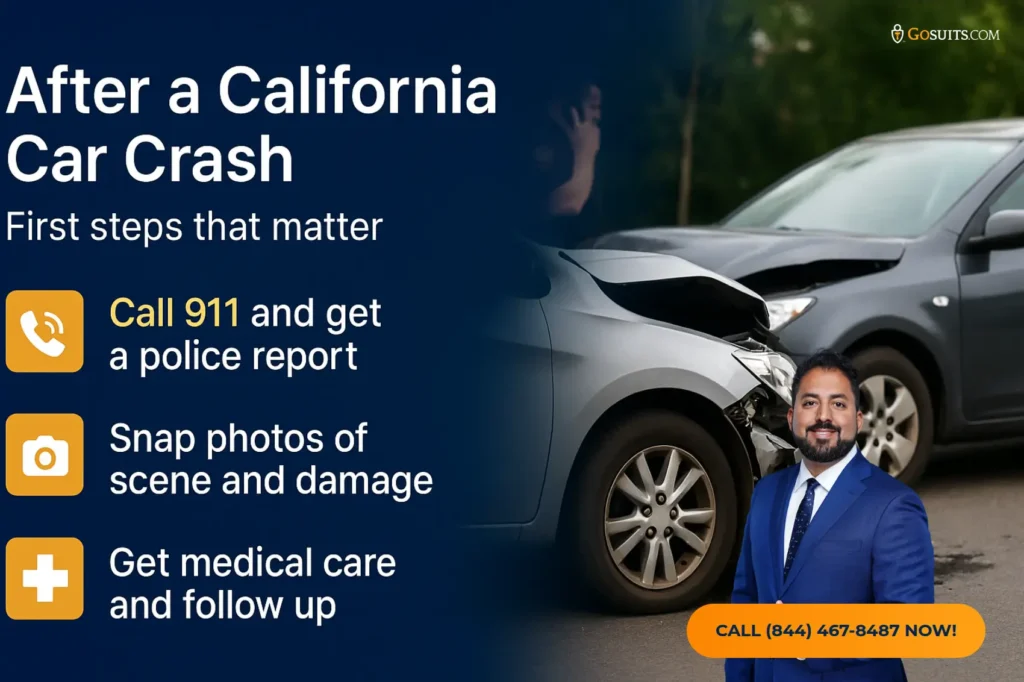
What are the basic elements of negligence in California?
To recover compensation in California, you generally must prove negligence, which the California Civil Jury Instructions (CACI 400) summarize as four elements: duty, breach, causation, and damages (Judicial Council of California – CACI). In simple terms:
- Duty: The defendant owed you a legal duty of care (for example, a driver must use reasonable care while driving).
- Breach: The defendant breached that duty (such as by speeding or texting while driving).
- Causation: The breach substantially caused your injuries.
- Damages: You suffered losses, such as medical bills, lost income, and pain and suffering.
California law recognizes many duties, from traffic rules under the Vehicle Code to the responsibilities of property owners to keep premises reasonably safe. Evidence of traffic violations or unsafe property conditions can support a claim, but every case turns on its facts and the quality of the investigation.
How does California’s pure comparative fault rule affect your claim?
California follows a “pure comparative fault” system, which means a plaintiff’s recovery is reduced by their percentage of fault but not barred unless they are 100 percent at fault. This doctrine has been a cornerstone of California law since the California Supreme Court decided Li v. Yellow Cab Co., 13 Cal.3d 804 (1975) (CourtListener). For example, if your total damages are $200,000 and a jury finds you 25 percent at fault, your award could be reduced to $150,000. This rule applies in car collisions, premises cases, and other negligence contexts.
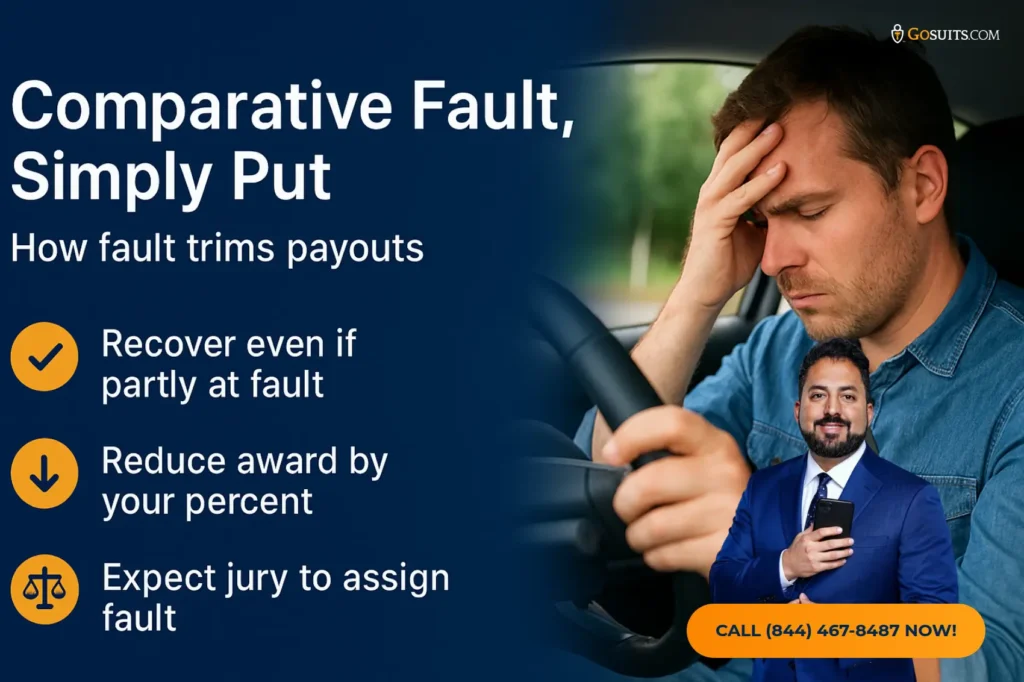
California also limits joint liability for non-economic damages (like pain and suffering) to a defendant’s percentage of fault under Civil Code section 1431.2 (sometimes called Prop 51). Economic losses (such as medical expenses and lost wages) can be joint and several among multiple defendants (Cal. Civ. Code § 1431.2).
What deadlines apply to California personal injury and wrongful death cases?
Deadlines matter. Missing one can end your claim:
- Personal injury: In most cases, you have two years from the date of injury to file suit (Cal. Code Civ. Proc. § 335.1).
- Property damage: Generally three years (Cal. Code Civ. Proc. § 338).
- Wrongful death: Typically two years from the date of death (CCP § 335.1), with claimants and damages defined by statute (CCP § 377.60).
- Claims against public entities: A written government claim must usually be presented within six months of the injury for personal injury and wrongful death, and within one year for certain property claims. Filing a civil lawsuit typically comes after the government claim process (Cal. Gov. Code § 911.2; § 945.4).
- Minors and tolling: Special rules can pause or alter deadlines, such as for minors (CCP § 352(a)).
Deadlines can vary based on the facts, the type of claim, and who is being sued. It is important to evaluate timing early.
What types of accident and injury cases are common in California?
California personal injury law covers many incident types, including:
- Motor vehicle collisions in dense metro areas like Los Angeles, San Jose, and San Francisco, and across freeways statewide.
- Truck accidents on corridors such as I-5, I-10, and I-80 involving interstate carriers subject to federal regulations.
- Motorcycle, bicycle, and pedestrian crashes in urban and coastal communities across Orange County, San Diego, and Santa Monica.
- Rideshare incidents involving Uber and Lyft in cities like Sacramento and Oakland.
- Premises liability incidents, including slips, trips, falls, and inadequate maintenance by property owners.
- Wrongful death claims arising from fatal car crashes, unsafe properties, and other negligence-based events.
What should you do after a car accident in California?
After a crash, your health and safety come first. If possible, call 911, seek medical attention, and gather information. California’s Vehicle Code requires drivers to exchange information and, in some cases, report the collision to authorities. Key steps include:
- Call law enforcement and request a Traffic Collision Report. CHP and local police reports can be important evidence (CHP – Traffic Records).
- Collect evidence such as photos, witness contacts, dashcam footage, and the other driver’s insurance and license details.
- Notify your insurer promptly, but avoid recorded statements until you understand your rights.
- Get medical care and follow through with treatment. Medical records connect the collision to your injuries.
California’s “basic speed law” requires driving at a reasonable speed for conditions, not just under the posted limit (Veh. Code § 22350). Pedestrian right-of-way laws and other traffic rules may also shape liability (Veh. Code § 21950).
How do truck accident claims work under California and federal rules?
Large truck crashes often involve layers of state and federal regulation, corporate relationships, and data sources. Federal hours-of-service rules limit how long commercial drivers can operate before resting (49 C.F.R. Part 395). Post-crash, key evidence can include electronic logging device (ELD) data, vehicle control module data, bills of lading, dispatch records, and maintenance logs.
NHTSA and the Federal Motor Carrier Safety Administration publish national crash and safety data that inform safety policy and litigation trends (FMCSA; NHTSA Research & Data). In California, discovery under the Civil Discovery Act can be used to request driver qualification files, training materials, and compliance records when they are relevant to liability (CCP § 2017.010).
What unique issues arise in motorcycle, bicycle, and pedestrian crashes?
Motorcyclists, bicyclists, and pedestrians face heightened risk because they lack the protection of a vehicle frame. Even at moderate speeds, impacts can lead to fractures, concussions, or spinal injuries. California roadway safety initiatives and local ordinances often aim to reduce these risks, and California OTS releases research and data to inform prevention efforts (California OTS).
Liability can turn on visibility, right-of-way, lane positioning, speed, and adherence to traffic controls. California’s pure comparative fault system applies, so a rider’s or walker’s alleged fault will be assessed alongside a driver’s conduct. Helmet use for motorcyclists is mandatory in California and can affect injury severity assessments (Veh. Code § 27803).
How do Uber and Lyft (rideshare) insurance claims work in California?
California law requires transportation network companies (TNCs) and their drivers to maintain specified insurance coverages that vary by “period” of the trip (app off, app on with no match, en route to passenger, and during transport). When a driver is carrying a passenger or en route to a pickup after accepting a ride, California law requires substantial third-party liability coverage, including at least $1,000,000 in liability during active trips (Cal. Pub. Util. Code §§ 5430–5434; CPUC – TNC Information).
Coverage can be complex, especially when fault is disputed or when multiple insurers are involved. Prompt notice to the correct carriers and careful evaluation of coverage periods can protect your ability to recover.
How does California premises liability work for falls and property-related injuries?
Property owners and occupiers have a duty to use reasonable care to keep their property in a reasonably safe condition. Plaintiffs generally must show the defendant knew or should have known about a dangerous condition and failed to repair or warn. The Judicial Council provides jury instructions specific to premises liability (CACI 1000 series) (Judicial Council of California – CACI).
Key issues include notice of the hazard, routine inspection practices, lighting, flooring, handrails, spill cleanup logs, and whether the danger was open and obvious. Surveillance footage, incident reports, and witness testimony often become central pieces of evidence.
What is the difference between wrongful death and survival actions in California?
California recognizes two distinct civil claims when a death is caused by negligence:
- Wrongful death: Brought by eligible family members to recover their own losses, such as financial support and companionship (CCP § 377.60).
- Survival action: Brought on behalf of the decedent’s estate to recover losses the decedent sustained before death, such as certain economic losses (CCP § 377.30; see also CCP § 377.34).
These claims serve different purposes and can often be pursued together. Timing, proper parties, and damages categories should be reviewed early to comply with statutory requirements.
How are brain and spinal cord injury claims documented and valued?
Catastrophic injuries such as traumatic brain injuries (TBI) and spinal cord injuries can lead to lifelong medical needs, reduced earning capacity, and changes in daily living. Documentation often includes neuroimaging, neurologic evaluations, functional assessments, and life-care planning. The Centers for Disease Control and Prevention provides research on the burden of TBI and evidence-based approaches to prevention and care (CDC – TBI).
In litigation, damages may include projected medical needs, attendant care, assistive technology, and accommodations. Vocational and economic analyses are commonly used to quantify work-life and earning impacts. California’s rules on discovery and evidence govern how these materials are exchanged and presented in court (California Rules of Court).
How do insurance claims and lawsuits proceed in California civil courts?
Most personal injury matters start with an insurance claim and, if needed, proceed to a lawsuit in a California Superior Court. Typical stages include:
- Investigation: Gathering police reports, medical records, photos, videos, and witness statements.
- Claim submission: Sending a detailed demand package to the insurer; verifying applicable coverages and policy limits.
- Negotiation: California’s Fair Claims Settlement Practices regulations require insurers to investigate and respond within specified timeframes and to evaluate claims fairly (California Department of Insurance – Fair Claims).
- Lawsuit: Filing a complaint, serving defendants, case management conferences, discovery, motion practice, settlement conferences, and trial. See the California Rules of Court and local court rules for procedures (California Courts).
- Alternative dispute resolution: Mediation and, in some cases, arbitration may be used to resolve the case before trial.
How are damages calculated in California injury cases?
Compensation in civil cases is meant to make you whole. Categories include:
- Economic damages: Medical bills, rehabilitation, lost wages, lost earning capacity, household services, and out-of-pocket costs.
- Non-economic damages: Pain, suffering, inconvenience, physical impairment, disfigurement, and loss of enjoyment of life.
- Property damage: Vehicle repair or replacement, diminished value, and personal items.
California’s pure comparative fault rule and Prop 51’s limits on joint liability for non-economic damages can affect the final award (Civ. Code § 1431.2). In wrongful death, economic damages may include the value of financial support the decedent would have provided to their family, and non-economic damages may include loss of companionship consistent with the statute (CCP § 377.60).

When are punitive damages available in California?
Punitive damages are reserved for conduct proven by clear and convincing evidence to be malicious, oppressive, or fraudulent under Civil Code section 3294 (Cal. Civ. Code § 3294). They are not awarded for mere negligence. Courts consider the reprehensibility of the defendant’s conduct and constitutional limits on punitive awards.
What evidence should you gather and preserve after an accident?
Solid evidence strengthens your case, whether you are a plaintiff or a defendant. Helpful items include:
- Scene evidence: Photos, videos, skid marks, debris fields, weather, lighting, and road conditions.
- Vehicle evidence: Damage points, crash data module downloads, dashcam footage, and repair estimates.
- Witness information: Names, phone numbers, statements, and any independent observations.
- Medical records: Emergency care, diagnoses, imaging, treatment plans, and prognosis.
- Employment records: Pay stubs, employer letters, and records documenting time missed from work.
- Property records in premises cases: Inspection logs, maintenance schedules, incident reports, and surveillance footage.
Timely preservation can prevent loss of key materials. In truck cases, prompt notice to a motor carrier to preserve relevant electronic data can be critical. California discovery rules govern information exchange once litigation begins (California Civil Discovery Act).
How are minors’ claims handled in California injury cases?
When a minor is injured, court approval is typically required to finalize a settlement. The California Rules of Court outline petitions for compromise of claims and the handling of settlement funds (Rule 7.950, Rule 7.952). These safeguards help protect the child’s interests, including structured settlements and blocked accounts as appropriate. Statutes of limitation may be tolled for minors in certain situations (CCP § 352(a)).
What defenses do defendants and insurers commonly raise in California?
Defendants and insurers may rely on several defenses, including:
- Comparative negligence: Arguing the plaintiff’s own conduct contributed to the injury, reducing damages under Li v. Yellow Cab (CourtListener).
- Assumption of risk: Especially in sports or recreational activities, California recognizes primary and secondary assumption of risk doctrines; see Knight v. Jewett, 3 Cal.4th 296 (1992) (CourtListener).
- Pre-existing conditions: Claiming that symptoms stem from prior injuries or degenerative conditions rather than the accident, although the “eggshell plaintiff” rule can still permit recovery for aggravated conditions per California jury instructions.
- Government immunities: Public entities may assert immunities or defenses such as design immunity (Cal. Gov. Code § 830.6), along with strict claim presentation requirements (§ 911.2).
Case strategy should anticipate these defenses and assemble evidence and testimony to address them.
Why is it important to work with a California personal injury lawyer?
Personal injury law intersects with insurance regulations, civil procedure, and local court practices. A California personal injury lawyer can help you:
- Investigate liability by gathering evidence, interviewing witnesses, and working with independent professional witnesses when needed.
- Navigate insurance requirements and timeframes under California’s Fair Claims Settlement Practices regulations (CA Department of Insurance).
- Value damages using medical documentation, wage records, and recognized valuation methods.
- Comply with deadlines for public entity claims and statutes of limitation (see California Legislative Information).
- Litigate effectively through discovery, motion practice, mediation, and trial in California Superior Courts.
Whether you are a plaintiff seeking compensation or a defendant working to resolve claims fairly, early legal help can improve the quality of your case evaluation and decision-making.
How does GoSuits support California personal injury clients?
How does a free consultation help you understand your California accident case?
If you were injured in CA, a free consultation gives you immediate clarity about liability, insurance coverage, medical documentation, and timing under California law. We speak with you about what happened, where it occurred (Los Angeles, San Diego, San Jose, San Francisco, Sacramento, Orange County, Riverside, San Bernardino, Fresno, Oakland, Long Beach, Bakersfield), who was involved, and any notices that may be required. We explain investigative steps, claim presentation, and what to expect if a lawsuit becomes necessary. This conversation helps you make informed, practical choices.
Who is GoSuits and how do we help in California personal injury and accident cases?
GoSuits personal injury law firm represents people and families in California civil injury cases, including car crashes, truck collisions, rideshare incidents, motorcycle and bicycle injuries, pedestrian injuries, premises liability, and wrongful death. We also handle catastrophic injury claims involving traumatic brain injury and spinal cord injury. We focus on thorough case development and client communication rather than high-volume case intake. Our California accident attorneys prepare each matter as if it could go to trial, which often improves the quality of negotiations and outcomes.
What availability and communication do we offer?
- Available 24/7: You can reach us any day, any time. We offer an immediate free consultation to discuss your situation and next steps.
- Multilingual support: We provide multilingual customer service, including 24/7 Spanish and Farsi speakers, so you can communicate comfortably and clearly.
- Regular updates: We schedule check-ins around your medical care and milestones such as claim submission, negotiation, and, if needed, litigation events.
What are our fee policies and cost transparency?
- No win, No Attorney Fees: You pay no attorney fee unless we recover compensation for you.
- No hidden administrative fees: We are direct and transparent about costs. We discuss case-related expenses in advance and document them clearly.
How do our tools and case workflow help your claim?
- Proprietary case software: We built internal personal injury software used only by our firm to streamline investigation, medical record retrieval, claim presentation, negotiation, filing, and discovery.
- Faster, organized execution: Our system helps us track treatment, lien balances, damages modeling, and litigation deadlines so nothing falls through the cracks.
- Insurance-focused strategy: We structure demands to address liability, causation, and damages in a format that claims professionals expect, backed by evidence and the governing California statutes, regulations, and jury instructions.
What is our experience and track record?
- 30 years of combined experience: Our attorneys have decades of combined practice in injury litigation and negotiation in California and other states.
- More than 1,000 litigated cases: We have handled over a thousand cases to settlement or verdict, with results published on our website: past cases.
- Complex litigation: In product liability, 18-wheeler collisions, brain injury, spinal injury, and other complex matters, we retain independent technical and medical witnesses within the state when needed to establish liability and damages.
- Multi-state litigation: We litigate severe injury and complex civil cases in Texas, California, and Illinois.
- Awards:
- #1 settlements and verdicts across multiple U.S. counties according to TopVerdict.
- Top 100 Settlement in Texas.
- Sean Chalaki recognized Top 40 Under 40 by National Trial Lawyers.
- Recognized by Best Lawyers in 2023, 2024, 2025.
- Selected to Super Lawyers since 2021.

Where do we practice and meet clients?
We represent clients across California, including Los Angeles, San Diego, San Jose, San Francisco, Sacramento, Orange County, Riverside, San Bernardino, Fresno, Oakland, Long Beach, and Bakersfield. We offer in-person and virtual meetings. Nearest office location: Los Angeles, CA. We also coordinate hospital and home visits when appropriate to document injuries and collect needed information early.
How do we participate in the community?
- Community engagement: Active in local schools, chambers of commerce, and non-profit foundations focused on safety and access to justice.
- Professional leadership: Service on trial lawyer organization boards, including the Texas Trial Lawyers Association, and membership in consumer protection groups.
If you are searching for a California personal injury lawyer, California accident attorney, car accident lawyer California, wrongful death attorney California, serious injury lawyer California, or an accident law firm that prioritizes careful case development over volume, we are here to talk. The initial consultation is free and available 24/7.
Which reliable resources and authorities does this guide rely on?
- National Highway Traffic Safety Administration (NHTSA) – national traffic safety data and publications.
- California Office of Traffic Safety (OTS) – California collision data and research.
- Federal Motor Carrier Safety Administration (FMCSA) – trucking safety and hours-of-service resources.
- 49 C.F.R. Part 395 – Hours-of-Service of Drivers.
- California Public Utilities Commission – TNC Information – rideshare regulatory overview.
- California Department of Insurance – Fair Claims Settlement Practices – insurance handling rules.
- California Rules of Court – statewide civil procedure rules.
- Judicial Council of California – CACI – civil jury instructions (negligence, premises liability, damages).
- California Legislative Information – official California codes, including:
- CCP § 335.1 – two-year limitations period for personal injury/wrongful death.
- CCP § 338 – three-year limitations for property damage.
- CCP § 352(a) – tolling for minors.
- CCP § 377.60 – wrongful death.
- CCP § 377.30 and § 377.34 – survival actions.
- Veh. Code § 21950 – pedestrian right-of-way.
- Veh. Code § 22350 – basic speed law.
- Veh. Code § 27803 – motorcycle helmets.
- Civ. Code § 1431.2 – several liability for non-economic damages.
- Civ. Code § 3294 – punitive damages.
- Pub. Util. Code §§ 5430–5434 – TNC insurance framework.
- Gov. Code § 911.2 and § 945.4 – government claims; § 830.6 – design immunity.
- CCP § 2017.010 – discovery scope.
- Li v. Yellow Cab Co., 13 Cal.3d 804 (1975) – comparative fault.
- Knight v. Jewett, 3 Cal.4th 296 (1992) – assumption of risk.
- CDC – Traumatic Brain Injury – TBI research and data.
- U.S. Courts – general federal court resources (for cases touching federal regulations).
